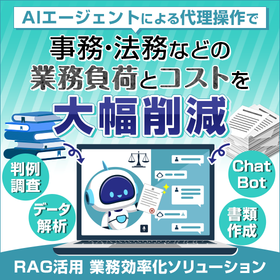[AI Use Case] Automation of Inspection in the Manufacturing Industry
AI can prevent errors that cannot be completely avoided by human eyes, enabling labor reduction and increased efficiency!
Our company has examples of "automated inspection in manufacturing" utilizing AI and other technologies. AI can perform real-time inspections to check for defects in finished products. In addition to checking for damages such as cracks and chips, it can address various types of defects, including dirt and assembly errors of parts, with a track record in inspecting precision components, wire harnesses, and equipment. Moreover, by applying this technology to food, it is also possible to check for discoloration and foreign object contamination, with successful implementations in food factories. [Case Overview] - We possess a unique AI model that allows inspections to be conducted using only images of normal products, without the need for learning from defective product data. This enables high accuracy even when it is difficult to collect data on defective products. - AI can prevent errors that are inevitably missed by the human eye, allowing for labor reduction and increased efficiency. *For more details, please download the PDF or feel free to contact us.
basic information
For more details, please download the PDF or feel free to contact us.
Price range
Delivery Time
Applications/Examples of results
For more details, please download the PDF or feel free to contact us.
catalog(4)
Download All CatalogsRecommended products
Distributors
Our company is engaged in the research and development of artificial intelligence. We not only focus on efficiency through the development of AI and IoT but also provide comprehensive consulting and development that includes creating user interfaces to visualize these technologies and addressing operational challenges that often arise in reality. To create intelligence that does not yet exist in the world, we foster creativity through unconventional thinking. Everything we create aims to advance AI one step further, as we quietly and boldly continue to build upon our ideas.















